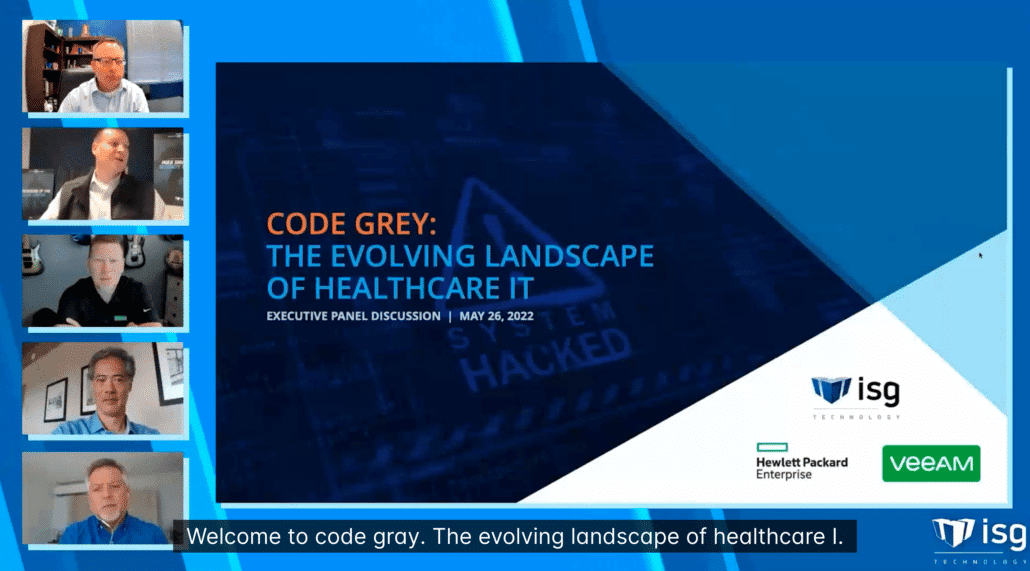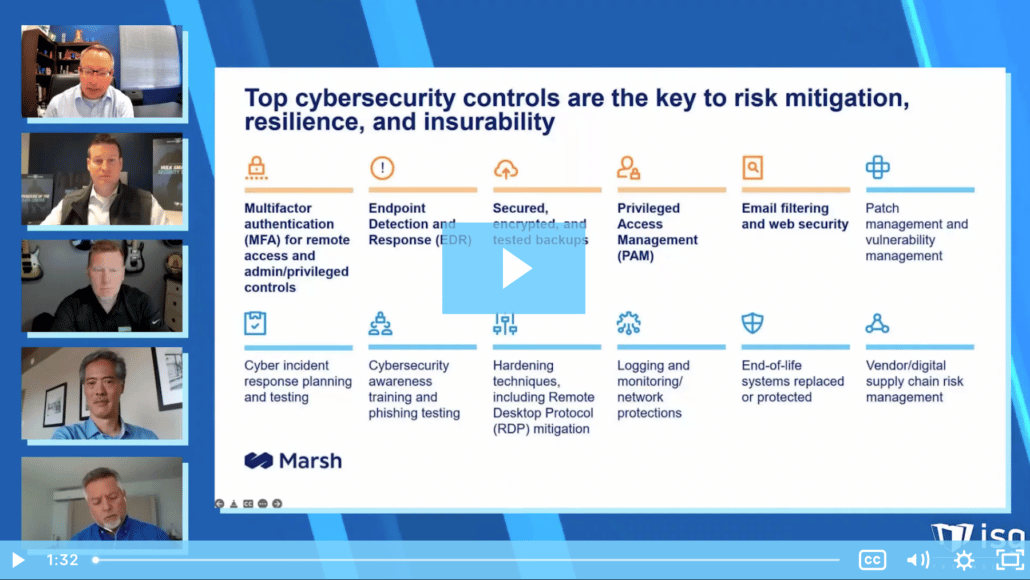In our recent webinar, we discussed the evolving threat landscape of healthcare IT. Healthcare might be one of the most confidential industries in the world, which makes it one of the most targeted by cybercriminals.
From ransomware attacks to phishing emails and insider threats, healthcare organizations must be prepared for a multitude of potential security threats.
You can view the webinar in its entirety here.
Evolution of IT in Healthcare
Prior to the last 3 years, the transition in healthcare technology has been somewhat gradual. The covid-19 pandemic not only amplified the gaps in current patient care but also sped up innovation to find more efficient and better solutions to deliver quality care. The need for secure healthcare technology solutions has nearly affected every aspect of patient care.

Healthcare organizations started seeing the value in online platforms and doctors started to become more available via phone which ultimately got more patients access. However, this opened the doors for new threats: cyber attacks. This shift required them to adapt to these new security challenges.
Healthcare providers are focused on patients whereas IT is focused on the cybersecurity of protected health information(PHI) stored. This new wave of technological importance meant there was a lot more training to be done in healthcare, the kind of training that IT support was responsible for.
Understandably so, the healthcare industry is fearful of ransomware. This is because they carry a high risk of experiencing it due to a recent survey where it was reported by HIPPA Journal that 66% of surveyed healthcare organizations said they had experienced a ransomware attack in 2021, up from 34% in 2020 and the volume of attacks increased by 69%, which was the highest of all industry sectors. Healthcare had the second-highest increase (59%) in the impact of ransomware attacks.
Additionally, they carry highly sensitive information including
- Personal Health Information(PHI)
- Financial data
- Intellectual property
The healthcare sector is at such a high risk for cyber threats that now in order to get more advanced protective cybersecurity, prices have skyrocketed creating new challenges for smaller healthcare providers.
Cybersecurity Threats and Ransomware Prevention
The ever-increasing cybersecurity threats are more prevalent than ever and the importance of knowing how to prevent them is insurmountable.

According to HIPPA Journal, In 2018, healthcare data breaches of 500 or more records were being reported at a rate of around 1 per day. Fast forward 4 years and the rate has doubled. In 2021, an average of 1.95 healthcare data breaches of 500 or more records were reported each day. Healthcare organizations are targeted due to their high propensity of paying the ransom, the value of patient records, and the inadequate security measures they often have in place.
It is essential for healthcare organizations to have multiple security measures implemented. The following is a list of steps you can take to protect your data.
Multi-Factor Authentication
MFA solutions provide an additional layer of security and are a user-friendly and cost-effective solution for boosting your healthcare organization’s cyber hygiene. MFA adds a second layer of security through the use of biometric technology, such as facial or voice recognition, or via an authorization code being sent to a user’s device. As the threat landscape continues to grow, most cyber insurance policies will not cover your organization unless you have MFA enabled on all applications.
Patch and Vulnerability Management
In the healthcare industry, this added layer of protection tends to take a back burner. The act of patch and vulnerability management is the process in which you apply security patches to systems and software. Your resources don’t always cover everything, this is one of those things that can cover the leaks your resources may miss.
Formulate an Incident Response Plan
A plan beyond calling your cyber insurance company must be implemented, in order to prevent these attacks before they happen. In fact, Comparitech reported that the average ransomware victim loses around 35 percent of their data.
Waiting until a breach occurs without a plan in place puts yourself in a position where you not only have to rely on an unlikely payout but may never fully recover your data.

Train Your Employees with Security Awareness Training
Employees are your first line of defense against cyber threats. Ensuring that your team is well-trained on the importance of proper cyber hygiene and is following security measures in place will help boost your cyber posture. Training
them repeatedly on password hygiene, phishing emails, and suspicious links is vital in preventing a breach.
Review Your RPD Policies
Your RPD (raw programming data) policies should be reviewed often to make sure they comply with HIPAA and HITECH regulations. This is a necessary step in preventing a breach as well as having proper documentation in the case of one.
Data Backup and Recovery
One of the most important steps in preventing a breach is having a solid backup and disaster recovery plan. This ensures that if something were to happen, you have a way to recover your data and continue operations smoothly.
Preparing for the Future of Healthcare
Because of the new technology debt in healthcare, it’s important to stay ahead of the game. This means keeping up with technology, staying educated on new threats, and constantly reviewing and updating your security measures.
When preparing for the future of healthcare, it’s important to take a look around and delegate expertise appropriately. CEOs don’t need to be IT experts – they just need to find IT support that is not only affordable but provides all of the benefits so your time is spent well in other places. With the right provider, there should be no worry that your IT is not in the right hands.
As healthcare IT continues to evolve, we must adapt and protect ourselves against these evolving threats in order to continue providing top-notch care for our patients. Partner with ISG Tech for our healthcare IT services.
